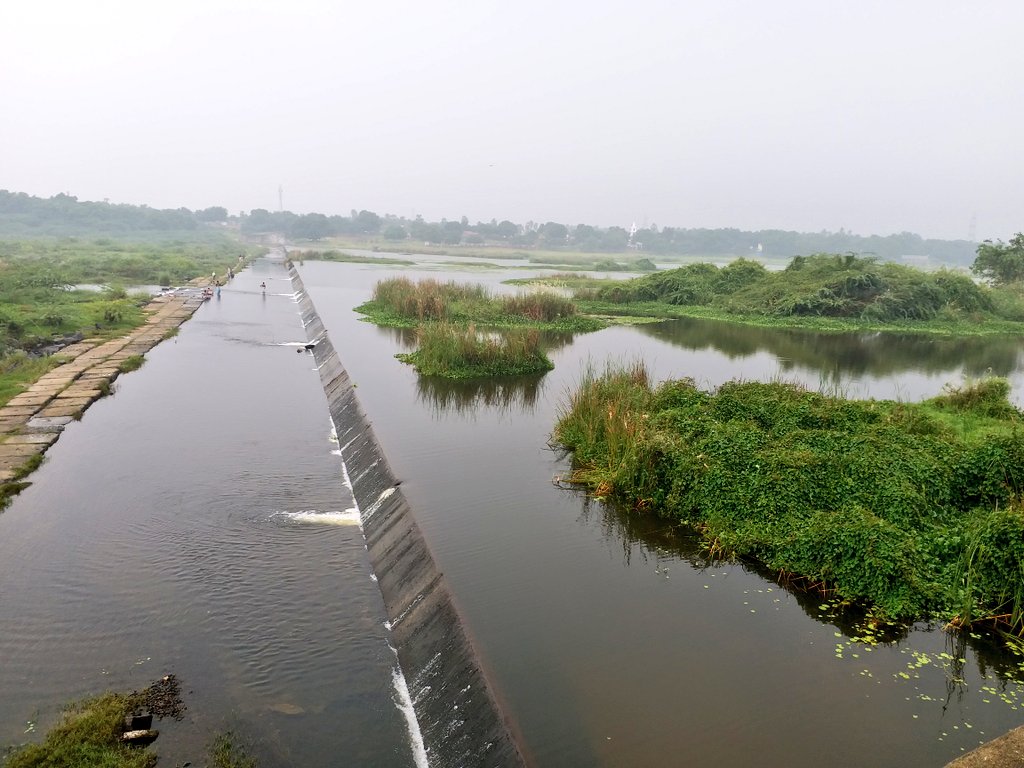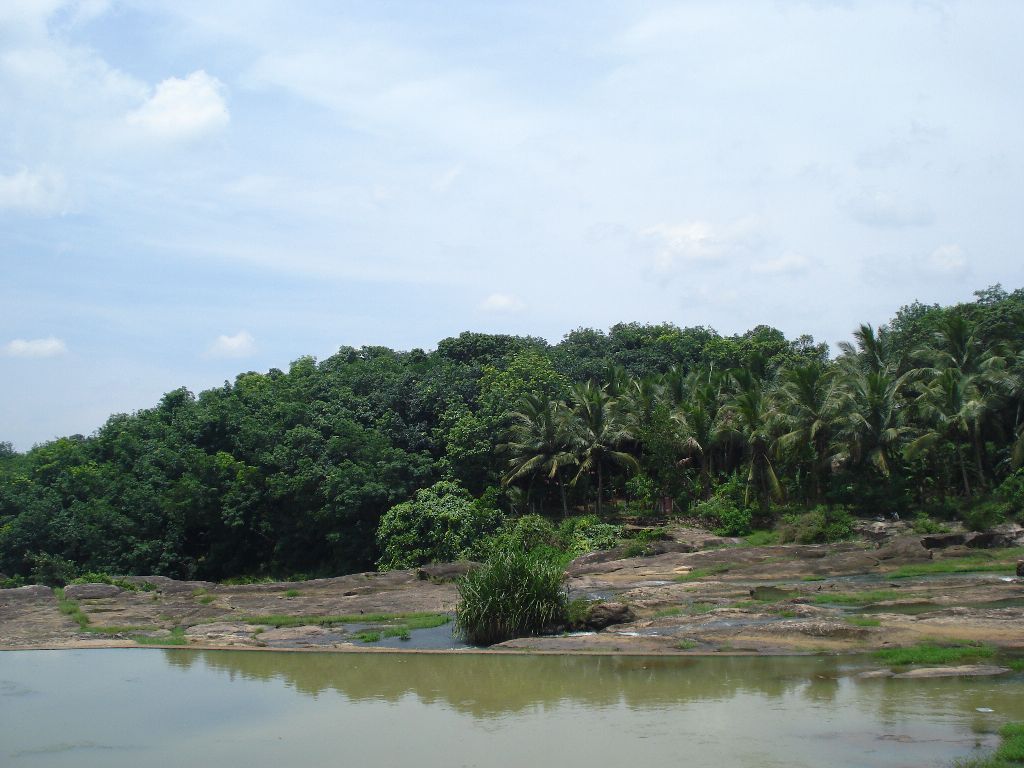- The Thevarakettu Saraswathi Temple is a Hindu temple dedicated to the goddess Saraswati, located in the village of Thevarakettu near Padmanabhapuram in the Kanyakumari district of Tamil Nadu, India.
- The temple is believed to have been built in the 8th century CE by the Travancore royal family, and is one of the most important temples dedicated to Saraswati in South India.
- The temple is situated on a hilltop, and is surrounded by a forest.
- The main shrine of the temple houses the idol of Saraswati, which is made of black granite.
- The idol is depicted seated on a lotus flower, holding a book in one hand and a veena (lute) in the other.
- The temple complex also includes shrines dedicated to other deities, such as Ganesha, Shiva, and Parvati.
- The Thevarakettu Saraswathi Temple is a popular pilgrimage site, especially during the Navratri festival.
- The temple is also known for its annual Vidyarambha ceremony, which is held on the first day of the Malayalam month of Chingam (August-September).
- During this ceremony, children are initiated into the world of learning by writing their first letters on a slate.
- Here are some of the important historical events associated with the Thevarakettu Saraswathi Temple:
- 8th century CE: The temple is believed to have been built by the Travancore royal family.
- 17th century CE: The temple was renovated by the then ruler of Travancore, Marthanda Varma.
- 19th century CE: The temple was again renovated by the British.
- 20th century CE: The temple has been under the control of the Hindu Religious and Charitable Endowments Department of Tamil Nadu.
- Long, long ago, Padmanabhapuram was once the capital of the rulers of the old princely state of Travancore or Venad State from the 15th to the 18th centuries.
- The name refers to the image of the lotus coming from the navel of Vishnu. The palace complex was constructed around 1601 A.D by Iravi Varma Kulasekhara Perumal.
- Maharaja Anizham Tirunal Marthanda Varma dedicated this palace to Lord Padmanabha and named the palace Sri Padmanabha Perumal Palace.
- From then on the fort and the surroundings earlier known as Kalkulam came to be known as Padmanabhapuram.
- Later, the kings, Dharma Raja, to be specific shifted their base to Thiruvananthapuram.
- Then they began the tradition of bringing deities to the king's palace during Navratri.
f3dea5.png)
Saraswathi Temple
The Thevarakettu Saraswathi Temple is a Hindu temple dedicated to the goddess Saraswati, located in the village of Thevarakettu near Padmanabhapuram in the Kanyakumari district of Tamil Nadu, India.
Timings
9.00 Am to 5.00pm
Entry Fee
No Entry Fee
Do's and Don'ts
- Respect Dress Code: Wear modest and appropriate clothing that covers shoulders and knees. Some temples may have specific guidelines regarding attire.
- Remove Footwear: Remove footwear before entering the temple premises. Some temples may require this before entering the main sanctum.
- Observe Silence: Maintain a quiet and peaceful demeanour inside the temple. Avoid loud conversations and use of mobile phones.
- Respect Photography Rules: Follow any guidelines regarding photography and videography inside the temple. In some temples, photography may be restricted in certain areas.
- Do Not Disturb Rituals: Avoid interrupting ongoing rituals or ceremonies. Wait patiently for the rituals to conclude before approaching the deity.
- Do Not Touch Sacred Objects: Refrain from touching or disturbing sacred objects, idols, or offerings without permission.
- Do Not Bring Non-Vegetarian Food: In many temples, non-vegetarian food and alcohol are not permitted on the premises. Respect dietary restrictions and traditions.
- Do Not Wear Inappropriate Clothing: Avoid wearing revealing or disrespectful attire. Dress in a manner that reflects reverence for the sacred space.
- Do Not Take Unauthorised Items: Do not take photos where prohibited, and do not carry prohibited items into the temple premises.
- Do Not Enter Restricted Areas: Respect any restricted areas within the temple premises. These areas may be off-limits to non-priests or the general public.
Dress Code
Men: Traditional attire such as dhoti (mundu) with or without angavastram (shawl) is appropriate. Some temples may allow men to wear formal trousers and shirts.
Women: Saree, half-saree, or salwar kameez are commonly worn. If wearing a saree, ensure it covers shoulders and falls below the knees. Avoid sleeveless blouses unless covered with a shawl or scarf.
How to reach
By Air:
The nearest major airport is the Trivandrum International Airport (Thiruvananthapuram), located approximately 57 kilometres away from Kanyakumari. From the airport, you can:
Take a Taxi or Private Car: Taxis and private cars are readily available for hire at the airport. It takes about 2-3 hours to reach Kanyakumari depending on traffic conditions.
By Train:
Kanyakumari has its own railway station, Kanyakumari Junction (Station code: CAPE), which is well-connected to major cities across India. From the railway station:
Local Transport: Auto-rickshaws and taxis are available outside the railway station for commuting within Kanyakumari. The temple is a short drive away from the railway station.
By Road:
Kanyakumari is well-connected by road with a network of state and national highways. Depending on your starting point:
From Trivandrum (Thiruvananthapuram):
- Take NH66 (National Highway 66) southbound towards Kanyakumari. The journey takes about 2-3 hours depending on traffic.
Nearby Cities and Rivers
Nearby Rivers
Thamirabarani River:
Location: Originating in the Western Ghats in Tirunelveli district, it flows towards the east and drains into the Bay of Bengal.
Distance: Approximately 80-100 kilometres from Kanyakumari.
Significance: The Thamirabarani River is an important river in Tamil Nadu and is known for its historical and cultural significance.

Kodayar River:
This river flows through the Kanyakumari district and is part of the Kodayar Basin.
The river flows relatively close to Kanyakumari, with its basin located in the vicinity of the district.

Nearby Cities
Nagercoil:
Distance: About 20 kilometres from Kanyakumari.
Significance: Nagercoil is the administrative headquarters of the Kanyakumari district and is known for its temples, churches, and vibrant cultural heritage.
Tirunelveli:
Distance: Approximately 85 kilometres north of Kanyakumari.
Significance: Tirunelveli is a major city in Tamil Nadu, known for its historical temples, educational institutions, and rich cultural history. It is also located near the Thamirabarani River.
Thiruvananthapuram:
Distance: Around 90 kilometres northwest of Kanyakumari.
Significance: The capital city of Kerala, Thiruvananthapuram (formerly known as Trivandrum), is a significant cultural and educational hub. It is well-known for its temples, museums, and beautiful beaches.